4. Analysis
To give a first overview of the intratextual progression of emotions, we distinguish exclusively between positive and negative emotions (love + joy = positive, anger + fear + sadness = negative, agitation is discarded). We divide each poem into 10 parts and measure which parts contain positive and/or negative emotions. 2 Finally, we combine the values from all poems (Fig. 1).
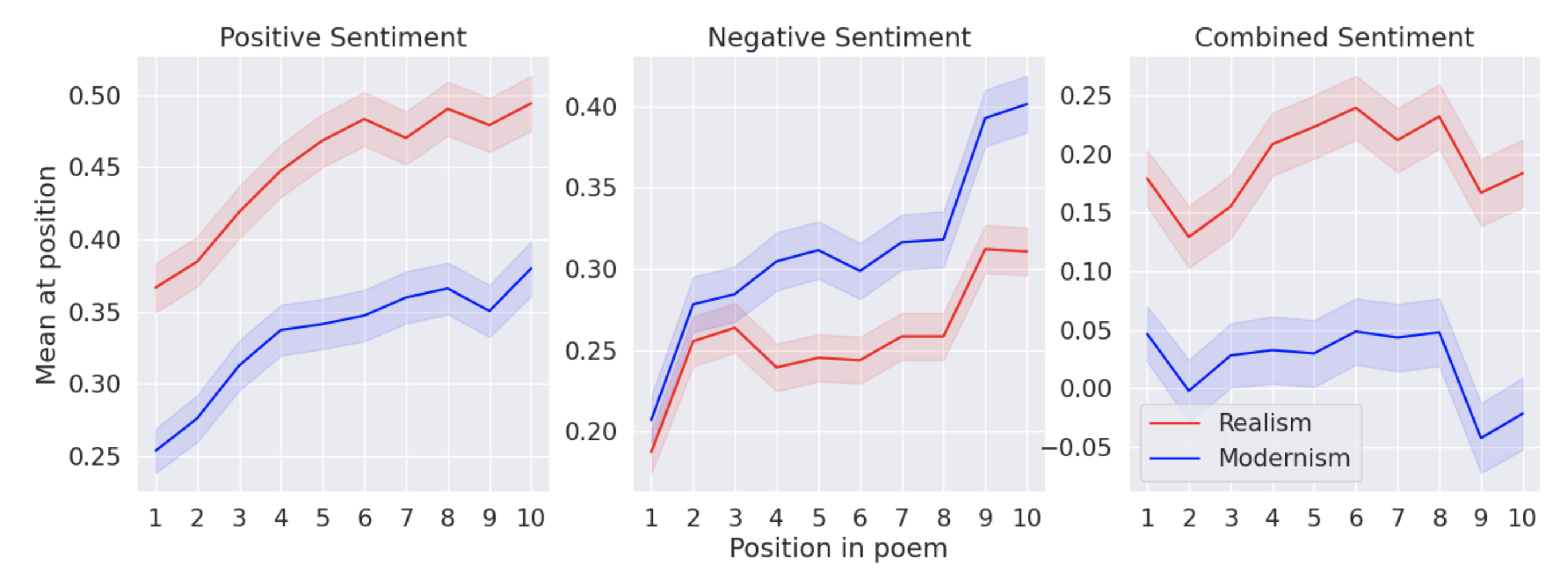
|
| Fig. 1: Progression of positive and negative emotions. Example: Of all the first deciles of the poems, 37% (realism) or 25% (modernism) contain at least one positive emotion, while 18% (realism) or 21% (modernism) contain at least one negative emotion. ‘Combined Sentiment’ equals ‘Positive Sentiment’ minus ‘Negative Sentiment’. The transparent area behind each line shows the 90% confidence interval. |
Throughout the text, realist poems tend to represent positive emotions more often and negative emotions less often than modernist poems. As a result, combined sentiment is consistently higher for realism. This outcome was predictable, as previous studies have shown that modernist poems typically represent fewer positive emotions in general (Konle et al. 2022). A new and important finding, however, is that realist and modernist poems have fundamental similarities (rather than differences) in their emotional progression. In particular, it is true for both periods that positive and negative emotions tend to occur more frequently at the end of the text than at the beginning. Loosely speaking, the texts become "more emotional" toward the end (p < .001). 3 There are also some differences. In particular, the relative frequency of negative emotions is almost the same in realism and modernism at the beginning of the texts, but it is substantially higher in modernism at the end. The general increase in negative emotions at the intratextual level is therefore even more pronounced in modernism.
To get a more nuanced view, we now distinguish the progression of emotion into several types (from positive to negative, from negative to positive, etc.). For readability, we divide each poem into 3 (instead of 10) parts and note for each part whether it contains mostly positive ( +), mostly negative ( ‒), or no emotions at all ( x). Finally, we assign each poem to exactly one of the resulting "flow types" and measure the relative frequency of each flow type (Fig. 2). 4
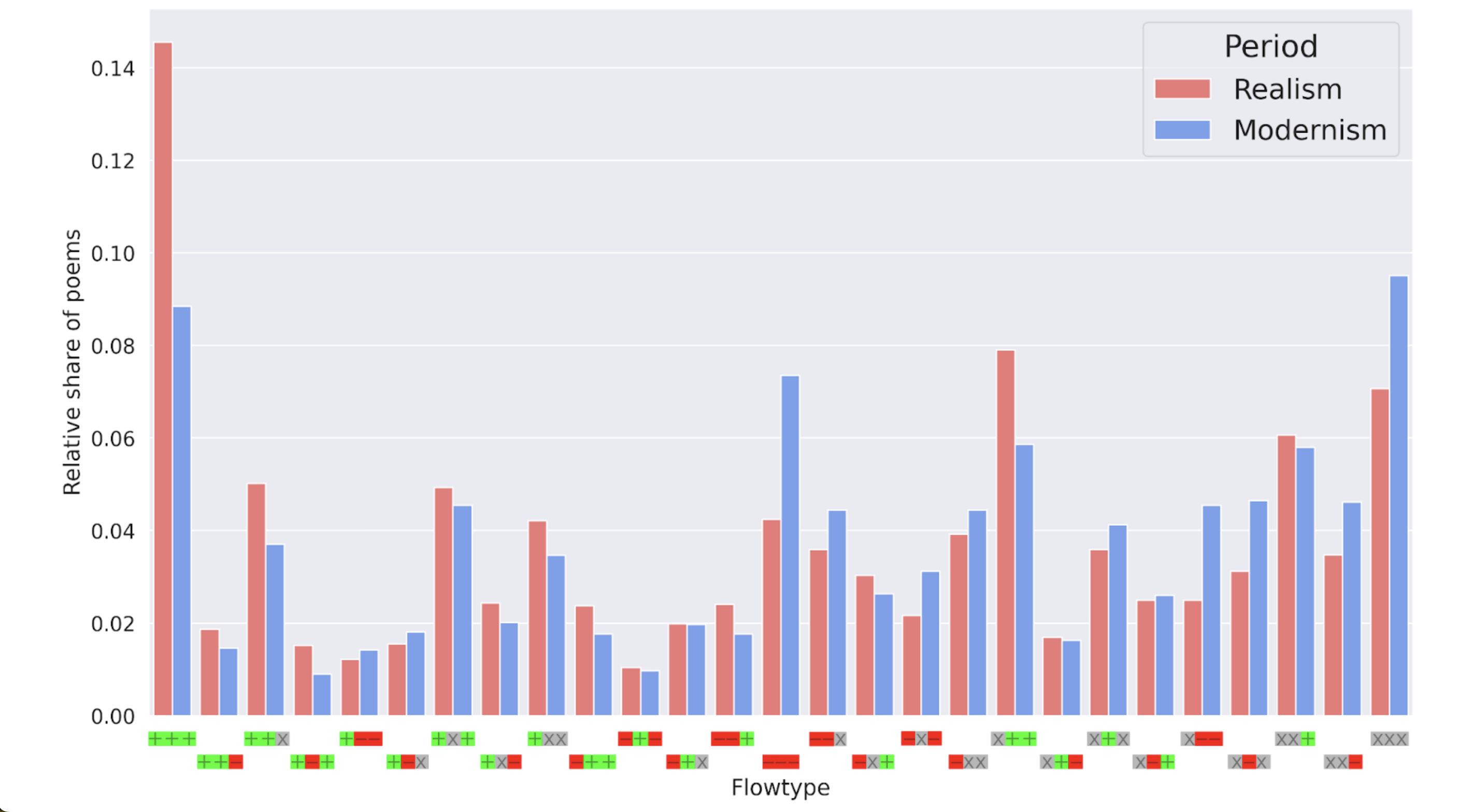
|
| Fig. 2: Relative frequencies of flow types. Example: The flow type ' +++' (positive emotions dominate in the first, second, and third thirds of the text) characterizes 15% of realist poems and 9% of modernist poems. |
Before analyzing the results, we provide a more summary view of the 27 flow types. To do this, we combine similar flow types into more comprehensive “superflow types” (Tab. 1). The frequency of each superflow type is the sum of the frequencies of the corresponding flow types (Fig. 3).

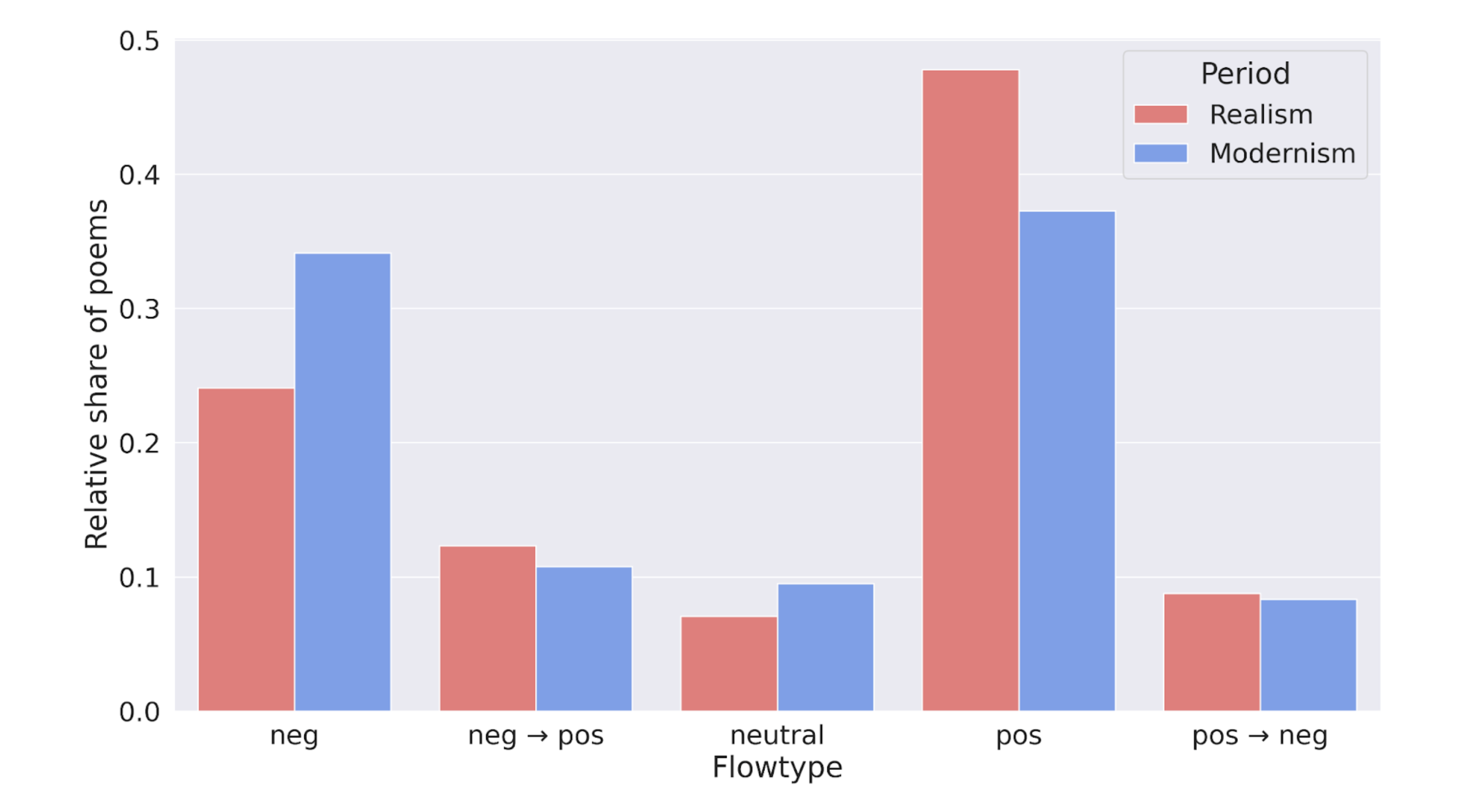
|
| Fig. 3: Relative frequencies of superflow types. Example: The superflow type 'neg → pos' (roughly, texts that begin with negative emotions and end with positive emotions) characterizes 12% of realist poems and 10% of modernist poems. |
Figures 2 and 3 show that realist poems are more likely to represent consistently positive emotions and less likely to represent consistently negative or consistently no emotions than modernist poems. 5 As indicated, this was to be expected in light of previous studies. What is surprising, however, is that there is no significant difference between realism and modernism with respect to the superflow types 'neg → pos' and 'pos → neg'. 6 The hypothesis proposed in the introduction states that modernist poetry is less likely to move from negative to positive emotions and more likely to move from positive to negative emotions than realist poetry, but our results do not support this contention.
Some scholars have made more specific claims about the progression of emotions in poetry. Hugo Friedrich, for example, focuses on poems that begin with fear and suggests that modernist poems are less likely to represent the overcoming of fear than poems from earlier periods (Friedrich 1956: 173). We aim to shed light on this thesis by taking another look at (super)flow types (table 2). We limit ourselves to texts that begin with fear and distinguish two superflow types, one that represents the overcoming of fear, i.e., the turn from fear to positive emotions (‘Relief’), and one that does not (‘no Relief’).
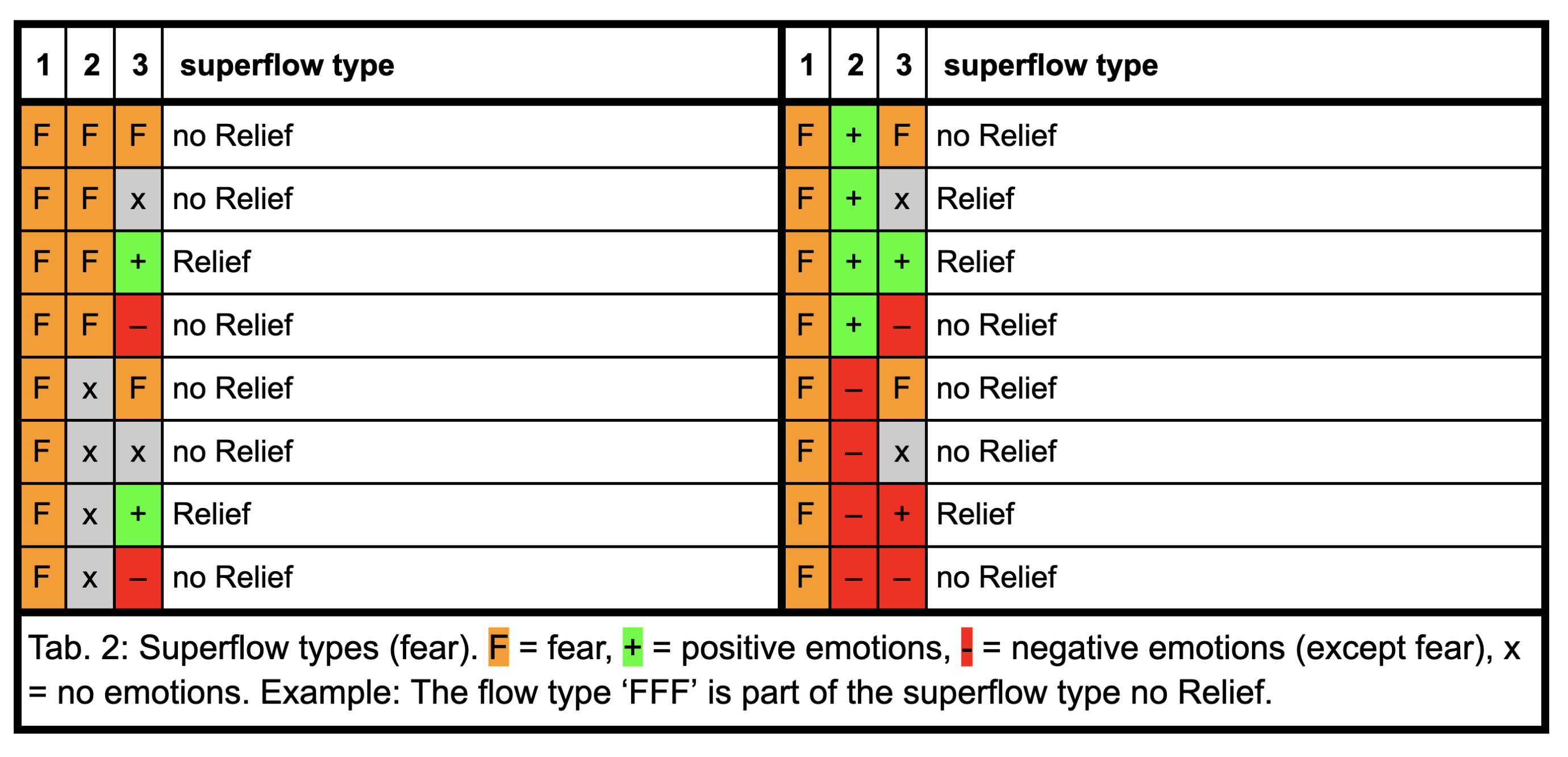
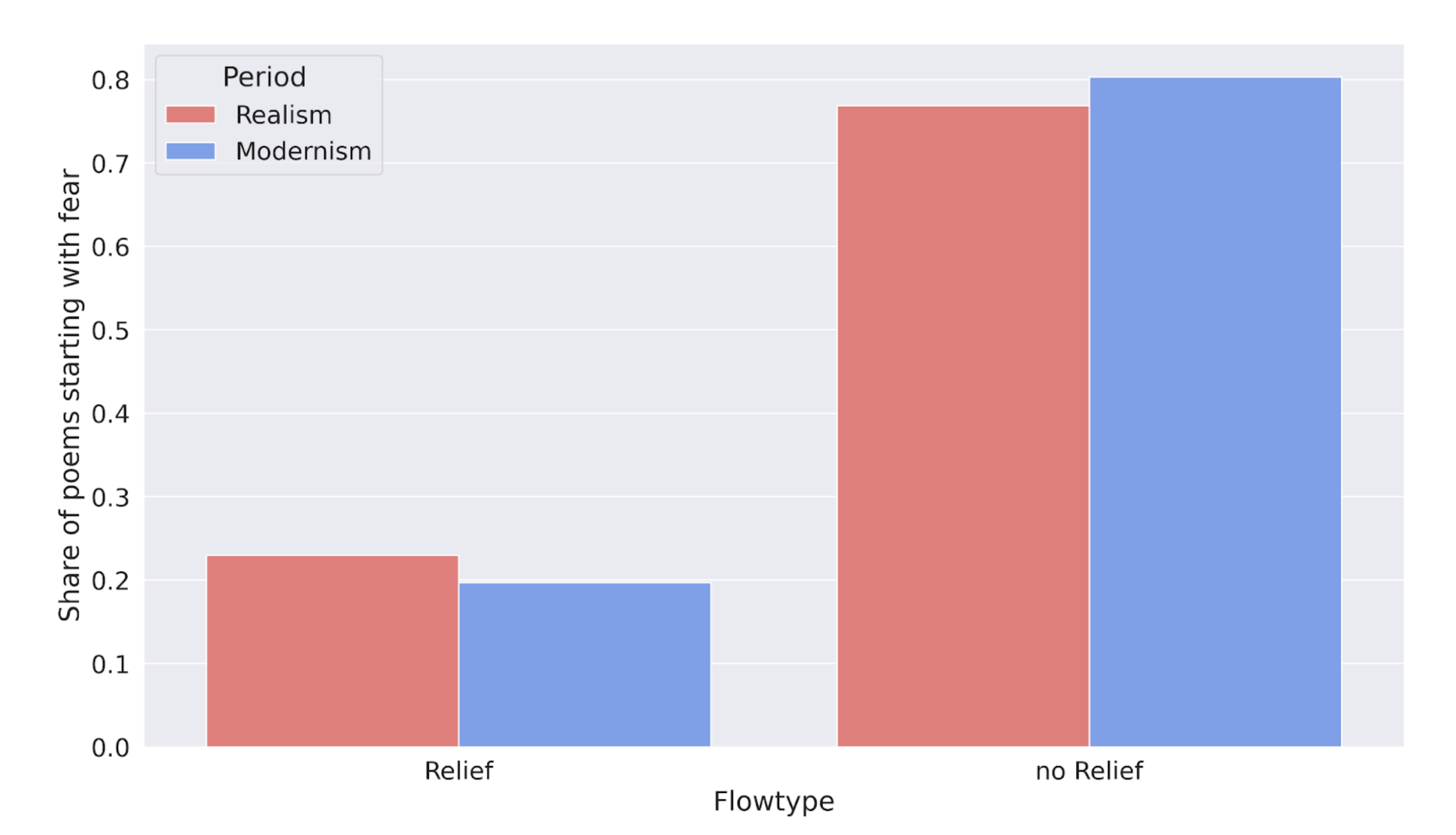
|
| Fig. 4: Relative frequencies of superflow types (fear). Example: The superflow type 'no Relief' (roughly, texts that begin with fear and that do not end with positive emotions) characterizes 77% of realist poems and 80% of modernist poems, considering only poems that begin with fear. |
In modernism, the superflow type ‘no Relief’ is much more frequent than the superflow type ‘Relief’ which means that modernist poems that begin with fear are not very likely to end with positive emotions. However, this is also true of realist poems. Even though the superflow type ‘no Relief’ is slightly more common in modernism than in realism, the difference is very small and not statistically significant. 7 Therefore, our results do not support Friedrich's claim. One possible reason for the disagreement is that Friedrich examines a substantially different corpus, i.e., modernist poems up to the mid-20th century by highly canonical and not necessarily German-speaking authors. We tested whether the frequency of the superflow types ‘Relief’ and ‘no Relief’ changes meaningfully when we consider only highly canonical authors from our (modernist) corpus (Rilke, Hofmannsthal, George, etc.), but it does not.